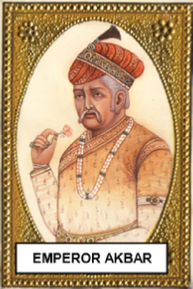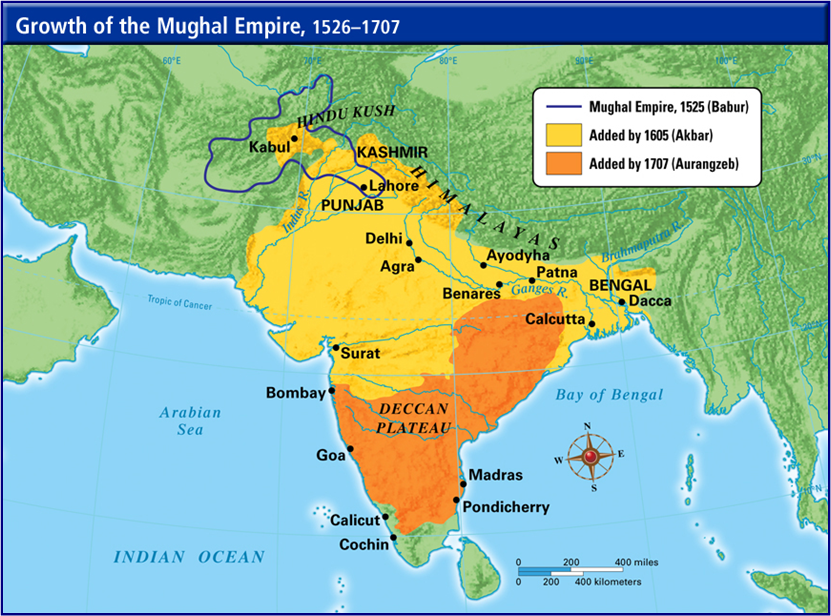


xxxxxAfter the
death of the Turkoman Mongol leader Tamerlane in 1405, Babur, as
we have seen (1526
H8), emerged as
the first Mughal Emperor. On his death in 1530, his 13-
AKBAR, MUGHAL EMPEROR 1556 -
 xxxxxThe Turkoman Mongol leader Tamerlane died in 1405, and
his vast lands, spreading over much of the Middle East and
southern Asia, were divided among his sons and grandsons. The
inevitable feuding and fighting followed but, as we have seen (1526 H8), it was his great
grandson, Babur (meaning "Tiger" in Arabic) who emerged as a
leader of distinction. After establishing a kingdom in Afghanistan
centred around Kabul, in 1525, after a number of unsuccessful
attempts, his forces broke out into the Punjab and defeated the Sultan of Delhi at the Battle of
Panipat. A few days later Babur captured Delhi and Agra and became
the first in a line of Indian emperors known as the Great Mughals.
Having set up his court at Agra, he spent the last four years of
his life conquering northern India as far as Bengal.
xxxxxThe Turkoman Mongol leader Tamerlane died in 1405, and
his vast lands, spreading over much of the Middle East and
southern Asia, were divided among his sons and grandsons. The
inevitable feuding and fighting followed but, as we have seen (1526 H8), it was his great
grandson, Babur (meaning "Tiger" in Arabic) who emerged as a
leader of distinction. After establishing a kingdom in Afghanistan
centred around Kabul, in 1525, after a number of unsuccessful
attempts, his forces broke out into the Punjab and defeated the Sultan of Delhi at the Battle of
Panipat. A few days later Babur captured Delhi and Agra and became
the first in a line of Indian emperors known as the Great Mughals.
Having set up his court at Agra, he spent the last four years of
his life conquering northern India as far as Bengal.
xxxxxHis son,
Humayun struggled to maintain order against the machinations of
his three brothers and the intrigue of his generals, and at one
time he was forced into exile in Persia. He returned in 1555 but
died within a year. In 1556, however,
with the coming of his son Akbar -
Acknowledgements
Akbar: Indian miniature in watercolour, date and artist unknown. Map (India): licensed under Creative Commons – https://bufordworld.wikispaces.com/Mughal+Empire.
M1-
xxxxxThus confirmed
as Emperor, Akbar took over the reins of government in 1560 and,
as we shall see (1576 L1),
gradually extended his rule throughout much of the Indian
subcontinent, winning over the conquered peoples by a firm but
basically just rule, based on a central administration. The
introduction of a well-



